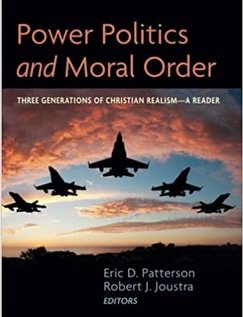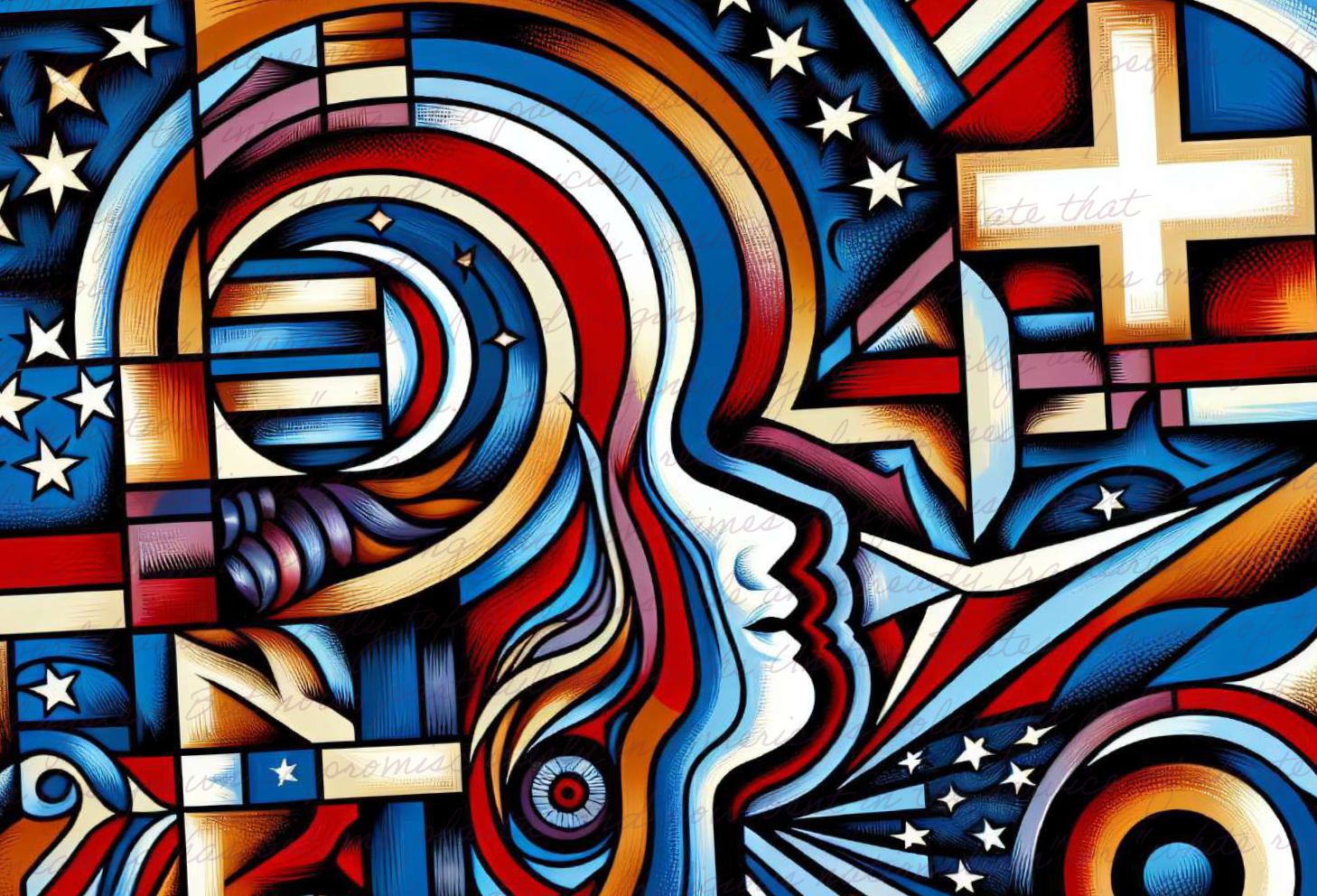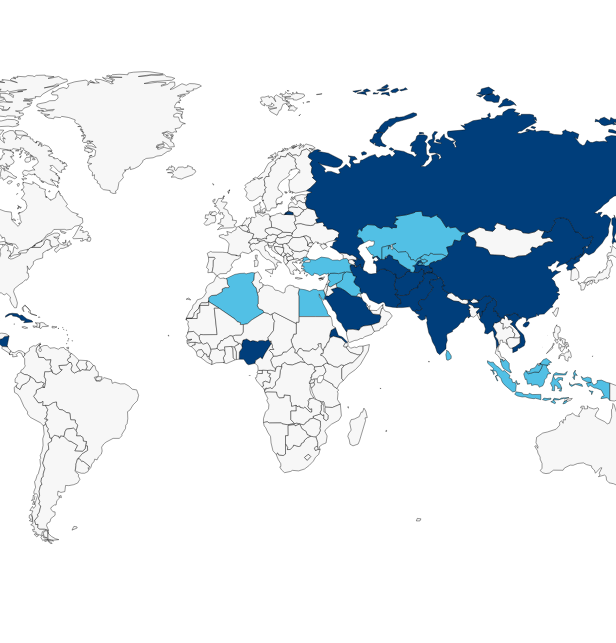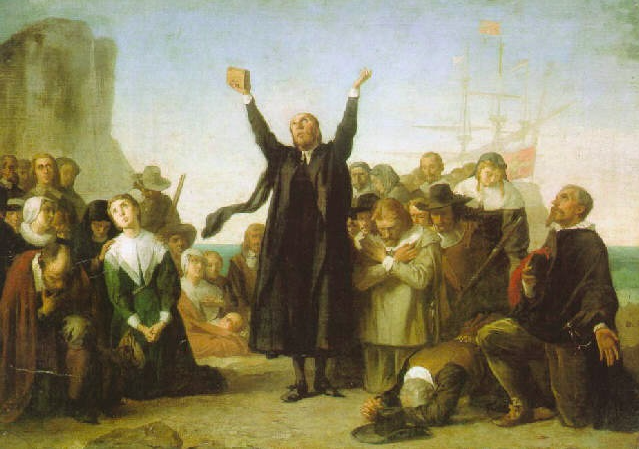
When Reinhold Niebuhr passed away on June 1, 1971, many thought that Christian Realism – an Augustinian approach to foreign policy – passed along with him. Jean Bethke Elshtain rightly called him the “most important public theologian of our lifetime,”[1] and this was evidenced by his ubiquity, from the cover of TIME magazine’s twenty-fifth anniversary edition to consultations at the White House. Niebuhr was influential on Christian Realists and secular Realists (e.g. Henry Kissinger) alike, indeed, Arthur Schlesinger called him “the father of us all.”[2] However, Niebuhr had many Christian Realist associates in his own generation such as theologian John C. Bennett, British historian Herbert Butterfield, and statesman John Foster Dulles. Most importantly, when Niebuhr retired from the scene, subsequent generations of Christian Realism took up the mantle.
Eric Patterson and Robert Joustra’s Moral Order and Power Politics is a collection of writings by Christian Realists, those providing policy analyses from a distinctly Augustinian perspective. Both the theological themes (e.g. sin, human potential, limits and restraint, neighbor love) and the major foreign policy questions of war, security, and peace, have a certain perennial quality, whether the theorist is Niebuhr in 1940, Paul Ramsey in 1970, or George Weigel in 2000. This book is a “best of” the writings of such Christian Realists, organized in three generations (1935-1965, late 1960s-1989, post-Cold War era to today).
What is Christian Realism?
Christian Realism is a “community of discourse” meaning a group “that enable[s] people to think and act with unity to address a wide range of serious social problems.”[3] In strong reaction to the irresponsible pacifism and idealism of many Christians and foreign policy specialists in the 1920s and 1930s, Christian Realism developed among theologians, political scientists, historians, and others wrote, lectured, and articulated positions that were rooted in the Bible and, therefore, hopeful yet realistic about human affairs.[4] Niebuhr’s friend Roger Shinn described Christian Realism:
…it was Christian in its appropriation of biblical motifs and classical doctrines, such as sin; it was Realistic in its criticism of naïve idealism or utopianism, and it was in confrontation with the brute facts and power struggles of the contemporary world. It was alert to both the word of God and the latest news from the European and Asiatic battlefronts.[5]
Christian Realists tends to share a number of general assumptions. Eight general assumptions are briefly elaborated below, in no specific order, drawn from the work of classical Realists like Niebuhr and his contemporaries as well as more contemporary thinkers. As we will see later, these general principles typically inform policy-relevant “middle axioms:” the middle ground between general principles and narrow technocratic application.
First, Christian Realism is a strand of international relations thinking that accepts many of the basic tenets of classical international relations/political science Realism. For instance: Christian (and non-Christian) Realism observes that we live in a world of anarchy with no overarching government; that governments or states are the primary political actors and they have to take care of themselves (“self-help”); and the principle concerns of states as they interact with one another are power and security. Peace is often elusive in international life and Realists tend to define peace in terms of order and security (e.g., balance of power) rather than in idealistic terms of the “brotherhood of man.”
Second, Christian Realism is theologically Augustinian in many ways, most notably in its anthropology. In other words, Christian Realism is a classical, or orthodox Christian understanding that recognizes the irony of the human situation: humanity has many talents, abilities, and creativity. This comes from the Christian doctrine of the imago Dei: that people are created in the image of the Creator God; but humans are limited by the Fall. Human sin is a fundamental characteristic of individuals and collectives.
Third, being Augustinian, Christian Realism emphasizes the importance of political order in a fallen world and asks that governments take seriously their responsibility—as articulated in Romans 13 and elsewhere—to preserve order, punish wrongdoers, and advance justice. Augustine tells us that what we need to aim for is the ‘tranquility of order’ in this world. It will never be perfect, like heavenly peace in the City of God, but that does not obfuscate the need for political order here. A related point is the moral responsibility of political leaders to promote that order. Christian Realists are not likely to blame immutable social forces, as do progressives and Marxists, for causing all the evil in the world, nor are they going to say that “this is the way it has always been” and thus it cannot change, as do political conservatives. Christian Realists, unlike quietists or pacifists, will not say, “We cannot stand up to evil because it will dirty our hands.” Instead, they will act as morally engaged individuals and stand up against evil.
Fourth, Christian Realists talk a lot about power. This is rooted in the fact that many of them learned from Marxist analysis in the 1920s to dissect, or what today we call “deconstruct,” power relations. One sees this particularly in the writings of Niebuhr as he looks at race and class relations as well as the relationships between various political powers. He exposes the power relationships including the subtle ones that most people do not realize are there. Christian Realists emphasize security, justice, and equality. This is an interesting point—the notion of equality. Niebuhr reminds us that an overemphasis on individual liberty, or license, usually comes at the expense of someone else. Often individuals, who are radically free, achieve their “freedom” on the backs of others. This is reminiscent of Aristotle’s polity where a minority is “self-sufficient” (free) due to the labor of the servant-class. Consequently, Christian Realism reminds us that we should care a great deal about equality, because equality is not only a condition under the law; it is a condition in which power balances power. Equal individuals are less likely to coerce one another than one radically free individual, who may have paid for that liberty at the expense of others.
Fifth, Christian Realism criticizes the potency of collective chauvinism. An example of this is nationalism. Niebuhr underscored that individual humans make choices based on self-interest. But he noted that groups are more likely to make chauvinistic
or self-interested choices because the restraint on their behavior is much lower. Think about how a mob acts versus an individual; nationalist and racist behaviors are cases in point. Niebuhr saw nationalism in the East and the West (National Socialism and Fascism in Europe, and predatory Communism in the East) as examples of this collective chauvinism. He also criticized, at home in the United States, the disproportion of power and wealth in the hands of the white majority, often at the expense of the black minority.
Sixth, Christian Realism considers all three levels of analysis, what Kenneth Waltz called the three ‘images’ of international relations theory.[6] Waltz’s important book Man, the State, and War described three levels of analysis for political observers: the individual, domestic politics, and international affairs. Waltz argued that students of foreign policy and international affairs should be given pride of place in political analysis because it is there where the major decisions that affect the globe—those of war and peace—take place. Waltz dismissed domestic politics and especially the role of individuals as unimportant for international relations analysis. In contrast, Christian Realists are classical Realists in that they not only consider each of the three levels of analysis, but they also study the interaction between all three levels.
Seventh, Christian Realism rejects many “-isms”; it rejects both idealism on the one hand and conservatism on the other. Niebuhr and his contemporaries were very critical of idealism. Why? Because it leads to revolutionary projects and it is not grounded in human reality. Niebuhr was a great critic of the legacies of the French Revolution, including the destruction of morality and institutions in favor of fantasies of human brotherhood and equality. The reality, according to Niebuhr, was that revolutionaries felt that the end always justified their means, and their means tended to be the most violent and oppressive possible, justified by the value of “the cause.” On the other hand, Niebuhr and other Christian Realists were not traditional conservatives. In fact, many of them were political liberals, supporters of socialists in the 1920s and 1930s, who became supporters of FDR, the Democratic Party, and liberal organizations like Americans for Democratic Action in the 1940s and 1950s. Most importantly, they were not old-school conservatives in that Christian Realism is not an argument to maintain the status quo. Indeed, Niebuhr spent considerable time and ink decrying the power inequalities and injustices enshrined in the status quo, arguing for peaceful, moderated change whenever possible. Likewise, Christian Realism is not quietistic. Niebuhr and other Christian Realists started out, like many people in the West, as pacifists or quasi-pacifists in the 1920s and early ‘30s because they were horrified by the carnage of World War I. Over time, though, Niebuhr and others realized that responsible, moral action was required to turn back the viciousness of the Nazis, what Niebuhr called ‘breaking the Hitlerian imperial will’ (Niebuhr 1967). Quietism of any sort, although supported by some religious groups (notably in the Anabaptist tradition) was seen as irresponsible behavior by Christian Realists because it aided in maintaining the unjust status quo. Christian Realism underscores that morally-responsible individuals have to stand up to evil.
Finally, Christian Realism emphasizes limits and restraint. Whereas liberals are typically revolutionaries willing to radically upset the world in favor of utopian schemes, Christian Realists are skeptical that this is possible. Niebuhr called himself a ‘Realistic optimist,’ and that is perhaps the best way to think about this. Christian Realists, on the one hand, are deeply concerned about unintended consequences. They recognize that in political life, any stone that is thrown into the pond generates thousands of ripples that emanate out and are difficult to track and account for. More importantly, Christian Realists are deeply concerned with the notion of politics’ greatest sin, which is hubris, or self-destructive pride. And over and over, particularly in Niebuhr’s most famous book, The Irony of American History (1952), he emphasizes how hubris clouds judgment and can lead to tragic results.
Three Generations of Christian Realism
The first generation of Christian Realism began in the lead-up to World War II and ended at the time of U.S. escalation in Vietnam, roughly the period 1932-1965. The interwar period (1918-1939) was characterized by idealistic policies rooted in utopian views of human progress, whether in terms of science, education, the Social Gospel, or, in international affairs, by a conviction that democracy, international law, and international institutions could transform power politics by mandating peace. Reinhold Niebuhr (1892-1971) published what some consider to be the opening salvo of Christian Realism, Moral Man and Immoral Society, in 1932, just as the Nazis were on the rise, the Soviets’ were ending their first Five Year Plan, and as the Japanese were preparing to rape Nanking.[7] The events that the first generation of Christian Realists observed, interpreted, and reacted to were of global consequence: the diabolical ideologies of National Socialism and Communism, the responsibility of government for order and justice at home and abroad, the responsibility of citizens and governments to reject irresponsible pacifism and undertake just wars, the complex issues of weapons of mass destruction. These first-generation Christian Realists emphasized individual sin and the sinful chauvinism of collectives and societies, which means that Christians, and all citizens, must act responsibly to challenge and thwart evil.
By the early 1960s, the world was changing. Decolonization and the Cold War rivalry between East and West suggested new battlegrounds in East Asia, Africa, and Latin America. European capitals were no longer leading world affairs but subsumed under the umbrella of the two great superpowers. A second generation of Christian Realism focused more and more on American power and the moral use of power because Washington was the center of gravity for human liberty against immoral Communism. Authors like Paul Ramsey, Ethics and Public Policy Center founder Ernest Lefever, and Kenneth W. Thompson applied Christian Realist principles to détente, wars of national liberation, nuclear deterrence, and anti-Communism.
Many of the issues of the time were framed by the bipolar world of Communism vs. Western liberal democracy, but the underlying questions of power politics were familiar to Christian Realists.
The second generation of Christian Realists also became proponents of the next generation of what today we call human rights. Just as the Holocaust and other depredations of World War II had shocked the world into producing not just the Tokyo and Nuremberg war crimes tribunals, but also the updated Geneva Protocols and Genocide Convention, the UN’s lack of potency in addressing the human rights abuses of the East meant that the West must try another strategy. One important step was the 1972 Helsinki Accords, a diplomatic win based on a trade-off for both sides. The Soviet Union agreed to a certain set of human
rights protocols and the West agreed to formally endorse the de facto Soviet borders of 1945 (which included land grabs in Eastern Europe). Presidents Jimmy Carter and Ronald Reagan emphasized religious freedom and human rights, and these issues increasingly came to be seen as a key part of U.S. foreign policy.
Since the end of the Cold War, self-identifying Christian Realists (e.g. some Kuyperians, Just War scholars, Augustinians, etc.) have been more theologically conservative, more committed to the orthodoxy of Scripture and their theological traditions than Niebuhr and the first generation of Christians Realists. Today, the theological conservative trend has meant a far more disciplined approach to matters of war and peace framed by Augustinian just war thinking, and thus a much more critical stance toward pacifism and the shoddy thinking that cannot tell the difference between non-violent direct action within a democracy (such as Martin Luther King, Jr.’s marches and sit-ins), terrorism and insurgency, or justified collective self-defense (war). Contemporary Christian Realism is also characterized by a friendly conversation between like-minded Catholics (George Weigel, Joseph Capizzi), Christian public intellectuals (Oliver O’Donovan, Jean Bethke Elshtain), and conservative Protestants (Eric Patterson, J. Daryl Charles, Nigel Biggar). Contemporary Christian Realism, with its Augustinian roots and moral-historical methodology, already had some overlaps with the English School of international relations theory, from Adam Watson to Scott Thomas. As Robert Joustra observes, Christian Realism has found new international expressions in Reformed circles, with a growing appreciation of Dutch theologian-statesmen such as Abraham Kuyper and Hermann Bavinck as early influencers of a nascent “Amsterdam School.”[8] Christian Realists continue to write in First Things and other periodicals, but have found a home in Providence: A Journal of Christianity and American Foreign Policy. Readers of Power Politics and Moral Order will find a rich set of resources, both for understanding the pass as well as charting an authentically Christian and realistic approach to international affairs.
***
[1] Jean Bethke Elshtain, “Where is the Legacy of Tillich and Niebuhr” in Just War Against Terror (New York: Basic Books, 2003): 106.
[2] In political science and international relations, “Realism” is typically contrasted with “Idealism” or “liberal internationalism.” There are a variety of Realisms, but what they hold in common is a view that political life, whether in war or peace, can best be understood in terms of power politics, competition, and security-seeking behavior. The quote in question comes from Richard Fox, “Reinhold Niebuhr and the Emergence of the Liberal Realist Faith, 1930-1945″ in Review of Politics 38 (July 1976): 250.
[3] James A. Herrick, The History and Theory of Rhetoric (London: Allyn & Bacon, 2001), 17.
[4] It is important to distinguish Christian Realism as a “community of discourse” from other more formal “schools” of thought. The latter typically have a founder, disciples, a genealogy, and often are tied to a specific geographical place. For instance, there are Marxists inspired by Marx and Hegelians inspired by Hegel. In the social sciences if one were to speak of the “Chicago school” of economics or to speak of “Straussians”, one would obviously mean, respectively, economics associated with the University of Chicago and the work of Leo Strauss, rather than the composer Richard Strauss or devotees of Levi 501s. Christian Realism has always been less formal, but nonetheless was quite significant in the mid-twentieth century and continues to inform the work of many individuals. It was a community of discourse because there never was a place, like Chicago or Columbia or Sciences-Po, which was known for a distinctively Christian Realist style; nor was there a narrow disciplinary focus with faculty, their graduate student acolytes, and intellectual descendants promoting their views.
[5] Eric Patterson, The Christian Realists (Lanham, MD: University of America Press, 2005): 4.
[6] Kenneth Waltz, Man the State, and War (New York: Columbia University Press, 1959).
[7] Reinhold Niebuhr, Moral Man and Immoral Society (New York: Charles Scribner’s Sons, 1932): 271.
[8] The best compendium on the Amsterdam School is Simon Polinder and Govert Bujis, Christian Faith, Philosophy, and International Relations: The Lamb and the Wolf (Amsterdam: Brill, 2019).
Eric Patterson is Executive Vice President of the Religious Freedom Institute.
Robert Joustra is Associate Professor of Politics & International Studies at Redeemer University.
THE RFI BLOG

Myths of Religious Nationalism in America and Abroad

France’s Olympic Hijab Ban Violates International Law And Exacerbates Tensions

RFI Briefs USCIRF on Lessons from 25 Years of U.S. Designating Religious Freedom Violators

Thought Police: Protecting the People from Prayer

A Religious “Delaware”: Establishing a State Haven for Religious Corporations
CORNERSTONE FORUM

Challenges to Religious Freedom in Iraq and the Critical Need for Action

Public Bioethics & the Failure of Expressive Individualism

Religious Liberty in American Higher Education

Scotland’s Kate Forbes and the March of Secularism

